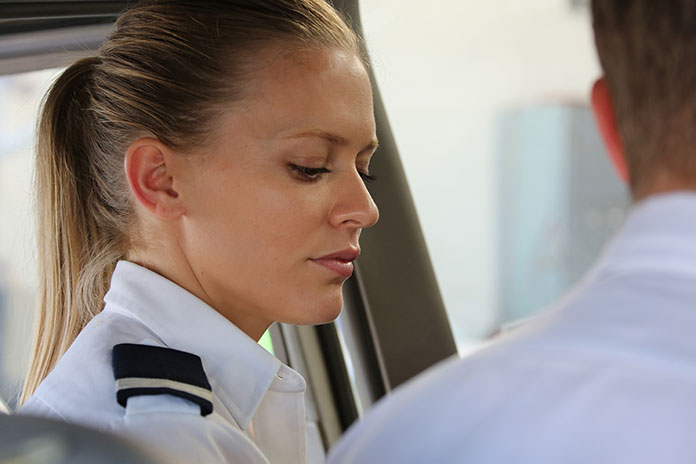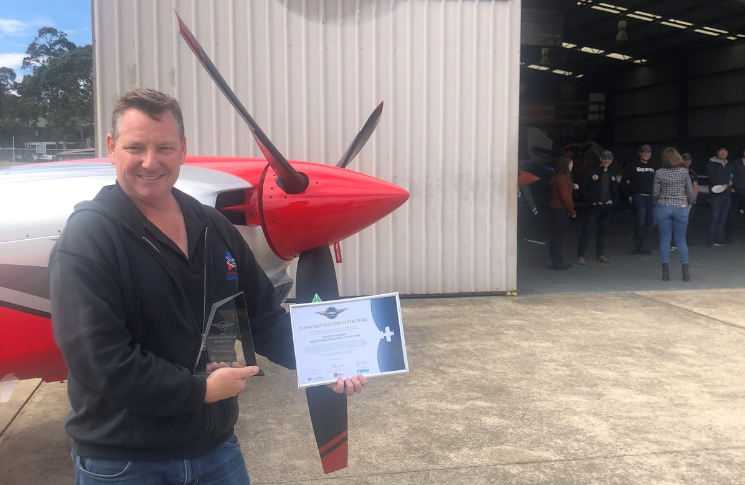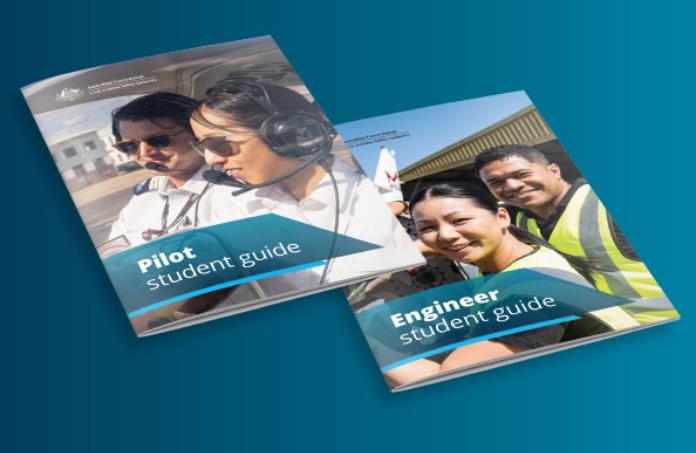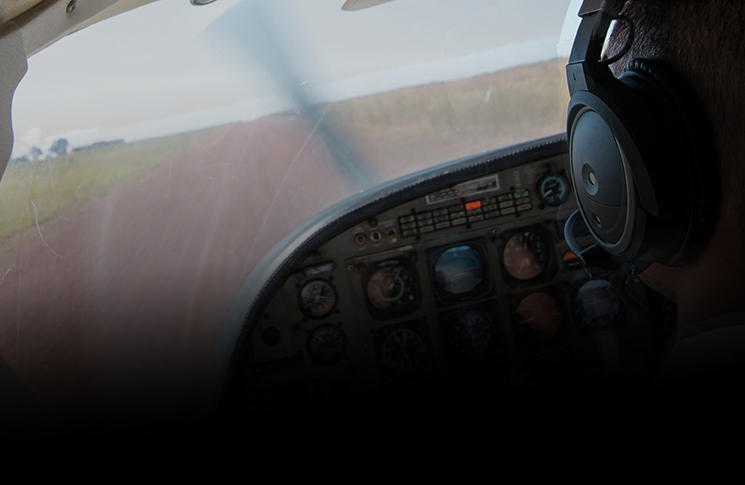Learning to fly may be one of the steepest learning curves you embrace in your lifetime. An instructor can make the difference between a student thriving and a student giving up and walking away.
As a student who has passed through many schools and encountered endless instructors, one of my personal bugbears is the lack of focus on the debriefing section of the lesson. In far too many cases, I’ve had an instructor hop out of the aircraft at shut down, leaving me with a head full of questions and an inclination to change schools.
During the initial stages of learning to fly—whether ab-initio or taking on a new rating—progress often feels less linear, more ‘one step forward, two steps back’.
A debriefing is vital for both the student and instructor to allow both to measure the progress of the student and the communication skills of the instructor, not to mention the setting up of excellent future safety habits.
According to Adam Starr, Flight Examiner/Instructor at Starr Aviation, the purpose of a debrief is to:
- check student knowledge and understanding
- allow a student to clarify any questions
- provide a cohesive link to the next lesson
- allow a student to debrief psychologically.
‘Debriefing is critical but is often overlooked in favour of the briefing,’ he says.
‘There is much concentration in current instructor courses on delivering a standard briefing as delivered on whiteboard/blackboard/slate since time immemorial. This achieves the apparent aim of demonstrating the trainee instructor’s knowledge but may also only demonstrate their memory of words or patterns.
‘What it doesn’t do is show how the instructor will get a behavioural or cognitive change in their student, which is what is needed for measurement of competence and progression.
‘Much of this is achieved by a good debrief but a lot of the teaching around this involves the use of review questions rather than a proper behavioural/psychological debrief.
‘Psychological debriefing, sometimes overlooked, is vital to ensure a student doesn’t depart feeling scared by something that occurred in the training and allows the instructor to explain the process. It also permits the instructor to measure the performance of the student in context of the syllabus, for them to have a concrete measurement of their progress.
‘The debriefing process allows a student time to vent their anxieties and allows for critical reflection, giving the option for them to request to repeat an element of the last lesson in the next. It also provides a much-needed break from an intense learning period, allowing the student to come back to earth before entering traffic on the way home.’
Carl Brewer, an RAAus Senior Instructor and VFR charter pilot at the Lilydale Flying School, agrees.
‘One of the big things, and one that as instructors we need to be vigilant with, is trying to find out if the trainee pilot has identified the same things the instructor has,’ he says.
With more than 1900 hours instructing in Jabiru J160s, almost all of which is ab-initio training, he has sent 40 pilots on their first solos. He is also the author of most of the school’s pre-flight briefing notes and is working on online briefings.
‘It’s not uncommon for instructors to assume that a lesson has been learnt, but without asking the trainee afterwards what they think they learnt, you can’t make that assumption—it’s a very good crosscheck,’ he says.
‘It also gives the instructor the chance to give some correction in a low pressure, more reflective environment. The debrief is also an opportunity to reinforce some key part of the lesson.
‘Sometimes it’s a very simple thing, such as “Those landings were great, we can improve our lookout on final, did you see the plane at the holding point?” However, while it’s important to be gentle with phrasing, an instructor should never lie. If something wasn’t good, you need to be able to communicate that, not just by saying it was rubbish, but also providing a solution.
‘For example, you could say: “‘How did you go with your pre-landing checks and flying straight and level at the same time? Before the next lesson, try visualising the sequence and getting through it faster, while glancing up and out the window to check your attitude. Also, you can practice this on the ground in the plane if you want, it’s free!”’
Safety is a culture and the debrief is an important part of that culture—the instructor’s job is ensuring the student feels safe and the information imparted on the brief is properly absorbed.
One tip I’d like to share from my experience of learning to fly is that of the ‘journal debrief’. After each lesson, I would venture to a café in Camden and write in a journal my experience of the lesson I’d just had.
At the end, I would highlight any questions I would have for the instructor and would detail areas which I felt I needed work or lacked confidence in. I continued to debrief myself long after going solo and have extensive notes on minor mistakes that, if left unchecked, may have compromised my safety. These journals not only helped me log my progress but also enabled me to see if an instructor and I were not gelling.
‘If the instructor consistently fails to provide adequate debrief then it is time to change schools,’ Adam Starr says.
A good debriefing will:
- ensure the instructor that the student has understood the concepts of the lesson
- allow the pilot to ask questions
- ensure the progress of the pilot is being monitored
- manage a student’s expectations
- ensure a student is feeling safe, confident and aware of their ‘need to improve’ areas
- allow the student to safely process the lesson before departing into traffic.






When I learned to fly I rarely was debriefed, if anything was said it was just in passing. I think the issue is that most instructors are merely there to get hours and are not that interested in “teaching”. That is not to be critical because they are on a career path which requires the necessary hours to be accumulated somehow to get them to their real goal (which is generally not as an instructor).
The point is that they are not being trained as teachers who happen to be flyers rather flyers having to teach. I have flown with at least one guy who was an absolute first class pilot no doubt about it, alway felt safe with him but as a teacher he was not good because he just constantly talking at me almost to the rant stage. This was not a bad guy by any means but I think he just got frustrated in the air because I was not reacting as he could, but the more he raved on the worse I got.
Completely agree. Debriefing following a training session or other check of whatever sort is just so important. It is also important to learn how to self-debrief after every flight in a way that isn’t either hyper-critical or ain’t I wonderful. It helps you find the things to work on and what you’re doing well.
One aspect of this article glaringly omitted is that the debrief can inform the instructor in areas where their own performance falls short. It is not just about the student’s progress, but also a self-check for an instructor as an on-going process of professional development and continuous refinement and improvement in instructional techniques. As Brian and Julian have mentioned, many hours-building instructors are not teachers, so we have to look at the Instructor’s rating and find out what is missing.
Unfortunately experienced instructors who are also good teachers can be hard to find.
Case in point: my first IFR training flight in IMC was quite problematic partly because a lack of an adequate pre and post flight briefings.
Our first planned RNAV approach was to be Wollongong, however we didn’t sight the ground because the approach required a non-standard 3.7 deg descent and this was never briefed.
Approaching our destination (YSBK – ceiling 700 ft / poor vis with strong SE wind and rain) the instructor told me to follow the Georges River rather than miss the RNAV approach. On sighting the runway I saw I was considerably North of the runway complex requiring a tight low-level split S turn to short final. The tower was unimpressed as they alerted us that we were heading towards the them at low level!
Landing in the heavy rain was like flying in a tunnel. It was one of those occasions where you have difficulty standing up after exiting the aircraft.
There was no post-flight briefing.
After reviewing the flight with several experienced airline pilots I went back to the instructor the next day and briefed him as to how the flight should have been performed. Sadly this should not have been necessary!
One of the factors was our alternate (Mudgee) had gone below minima due to unforecast storms, yet we had enough fuel to fly to Melbourne if necessary.
I learned to fly at Blackpool airport in the UK, (circa 1987). I honestly can’t remember ever having a pre or post flight briefing. It was all done in the aircraft. I don’t think I really learned to fly until I came to Australia (circa 1992) and bought VH-SQB, my old Beech Mouse.
So yes, I agree.
S
My instructor had years of experience and only wanted to be an instructor. De brief was usually longer than the pre flight briefing .and was never in the cost. Only ever paid for flight time. Sure it was built in but that also reduce the pressure to wind up the de brief. Hope to do my RAAus instructors rating with him now after 3 years and 400 plus hours flying.
Like others, I found that instruction is hit and miss – it is the older, career instructors that do a markedly better job than the hour builders that are looking forward to a career in air transport.
I really started to learn to fly, and fly well when I started gliding. Pre and post briefings are detailed, as is the attention to detail of the instructors, many of whom are retired commercial pilots that just love to fly.
The difference between the training regimes between the GA and gliding is night and day